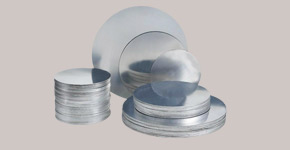
Typical Thickness of Aluminum Sheet for Food Packaging
The aluminum sheet for food packaging, with its excellent barrier properties, formability, and environmental friendliness, has become one of the core materials for food packaging. From snack packaging on supermarket shelves to takeout containers in restaurants, aluminum sheets protect the freshness and safety of food in various forms.
Application Scenarios
1. Packaging
This type of application mainly utilizes the high barrier properties of aluminum sheets to prevent the intrusion of oxygen, moisture, and light, extending the shelf life of food. In the European and American markets, it is commonly found in the aluminum-plastic composite layer of snack packaging bags, the sealing aluminum foil caps of yogurt cups, and the sealing foil of beer bottles.
Among them, 8011 aluminum foil, due to its combination of barrier properties and formability, has become the preferred material in this field. For example, it is commonly used as the inner protective layer in chocolate packaging in Europe.
In addition, under the packaging standards for pharmaceuticals and food, 1100 and 1060 pure aluminum foil are also often used for the sealing packaging of baby food, meeting stringent safety requirements due to their non-toxic and odorless properties.
2. Containers
With the development of the takeout and pre-prepared food industries, the demand for aluminum food containers has surged in overseas markets. 8006 and 8021 aluminum foil are core materials for these applications. Their excellent stamping properties allow for the production of various shapes of lunch boxes, with thicknesses ranging from 0.04-0.2mm, ensuring both strength and ease of heating.
In the United States, fast-food chains commonly use 8006-O temper aluminum foil for their wrinkle-free lunch boxes. This aluminium foil has a tensile strength of 123-135 MPa and can withstand the high temperatures of microwave ovens and ovens without deformation. 5052 aluminum foil, due to its superior corrosion resistance, is used to make reusable baked goods containers, catering to the baking needs of European and American households.
3. Bottle caps
Aluminum bottle caps are an indispensable component in the packaging of wine, dairy products, and beverages. 8011 aluminum foil, with its excellent mechanical properties due to the addition of Fe and Si elements, has become a core material for tamper-evident bottle caps. Its thickness is typically controlled at 0.20-0.23mm, meeting both stamping requirements and ensuring a reliable seal.
This specification is commonly used for wine bottle caps in Europe and carbonated beverage bottle caps in the United States. Its surface cleanliness meets food-grade standards, and its low ear-making rate significantly improves production efficiency. In addition, 3003 aluminum foil is often used for bottle cap gaskets, utilizing its good ductility to achieve a tight seal.
4. Special functional applications
For the storage needs of specific foods, aluminum sheets have seen personalized applications. For example, in Japanese sushi packaging, ultra-thin 1235 aluminum foil (0.018mm) is used, combining freshness preservation with easy tearing; while in Nordic frozen food packaging, 3004 aluminum foil, due to its good low-temperature toughness, has become the preferred material for frozen food containers, with a thickness typically between 0.1-0.2mm. These customized applications fully demonstrate the flexibility of aluminum sheets in the food packaging field.
Aluminum Sheet Thickness Selection
Thickness is a core parameter of aluminum sheet packaging, directly affecting barrier properties and formability. Based on application scenarios, aluminum foil can be categorized into three tiers:
- Ultra-thin (0.014-0.05mm): It is primarily used for food packaging films and sealing foils. Representative alloys are 1100 and 1060. For example, yogurt lids often use 0.02-0.03mm 1100 aluminum foil, ensuring both a tight seal and easy opening.
- Typical aluminum sheet thickness (0.05-0.1mm): It is suitable for packaging bags and small lunch boxes. 8011 and 8021 are the mainstream alloys. European snack packaging bags often use 0.06-0.08mm 8011 aluminum foil.
- Medium-thick (0.1-0.2mm): It is used for large lunch boxes, bottle caps, and other applications requiring strength. 8006 and 3004 alloys are the main types. For example, American takeout containers often use 0.15-0.2mm 8006 aluminum foil.
Original source: https://www.hm-alu.com/a/typical-thickness-of-aluminum-sheet-for-food-packaging.html



